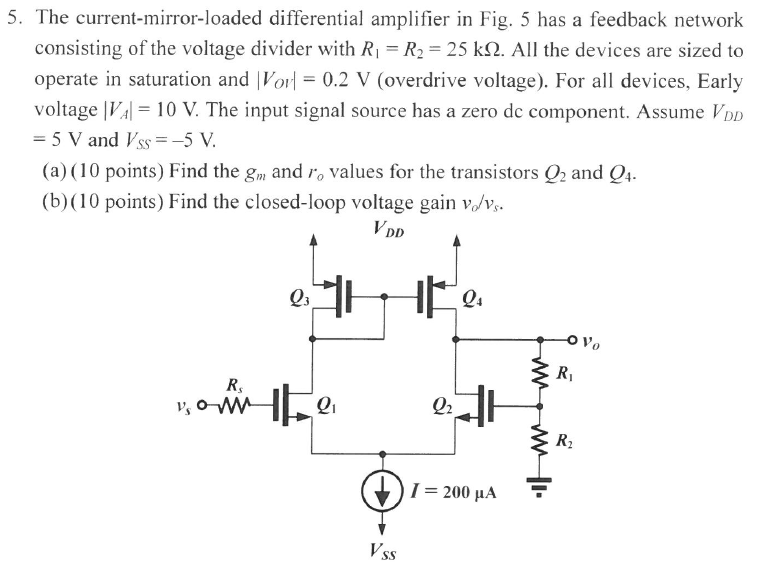The current-mirror-loaded differential amplifier in Fig. 5 has a feedback network consisting of the voltage divider with R1 = R2 = 25 kΩ. All the devices are sized to operate in saturation and |VOV| = 0.2 V (overdrive voltage). For all devices, Early voltage |VA| = 10 V. The input signal source has a zero dc component. Assume VDD = 5 V and VSS = −5 V. (a) (10 points) Find the gm and ro values for the transistors Q2 and Q4. (b) (10 points) Find the closed-loop voltage gain vo/vs.
